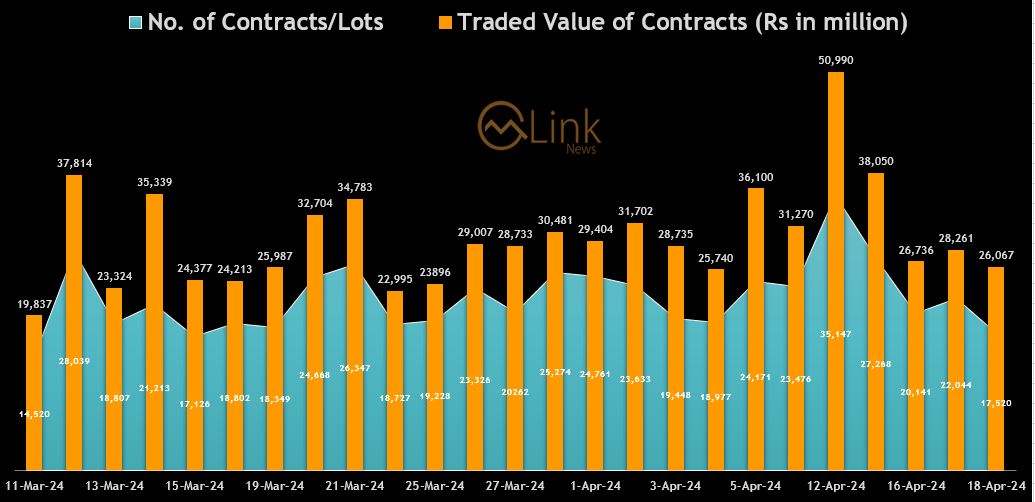You can’t bet on your favorite sports team right now, so a lot of people are making a gamble on the stock market instead. Online brokers Charles Schwab, TD Ameritrade, Etrade and Robinhood saw a combined 170% increase in...
You can’t bet on your favorite sports team right now, so a lot of people are making a gamble on the stock market instead.
Online brokers Charles Schwab, TD Ameritrade, Etrade and Robinhood saw a combined 170% increase in new accounts opened during the first quarter of 2020, as eager new investors saw opportunity after the stock market crashed in March.
These amateur traders — especially the Robinhood crowd — are getting a lot of attention as they screenshot their wins on Reddit.
The experts are mixed here: Billionaire investor Leon Cooperman criticized the newbie investors, saying their risky bets “will end in tears,” while others have given them credit for jumping in at bottom-barrel prices.
If you’re a beginner using your free time and money to pick stocks, here’s how to do it without going broke.
Trading vs. Investing: Yes, There Is a Difference
Traders and investors both buy stocks in hopes of earning a profit. But the terms aren’t interchangeable. According to Matt Frankel, certified financial planner at The Motley Fool’s The Ascent, not understanding the difference between the two puts new investors at risk.
“Investing means that you’re buying stocks (or other assets) with the goal of holding them for the long-term,” Frankel said. “What many new investors do — moving in and out of stock positions every few days — that’s trading.”
Does that mean you should never pursue trading? Not exactly.
“There’s nothing inherently wrong with trading if you understand that you’re essentially gambling, and therefore aren’t using any money you can’t reasonably afford to lose,” Frankel said.
Stock Trading Tips for Beginners: 6 Mistakes That Could Leave You Broke
Before you play stock trader, let’s make sure you can afford it. Don’t even think about stock trading if you aren’t investing for the long haul in a retirement account, like a 401(k) or Roth IRA.
You also need three to six months’ worth of living expenses in an emergency fund. It’s essential that you don’t put this money in the stock market. You don’t want to be forced to sell your stocks for a loss because you need cash in a crisis.
If you can truly afford the risk, follow these stock trading tips — and avoid these mistakes.
Mistake #1: Investing in a Company That Just Filed Bankruptcy
Investing in a bankrupt company may seem like the chance to score a big-name bargain. Hertz share prices crashed to 56 cents after it filed for Chapter 11 bankruptcy protection in May. Investors rushed in to scoop up what looked like a big-name bargain. By June 8, it was trading at $5.53 per share before tumbling down to $1.49 as of this writing on July 2.
Companies declare bankruptcy because they have an unmanageable amount of debt. In bankruptcy court, creditors and bondholders are paid in full before shareholders get a single penny.
“It might seem like a smart idea to speculate on bankrupt companies trading for just pennies on the dollar, but this is a sucker’s investment,” Frankel said. “In virtually all cases, shareholders are left with nothing when bankruptcy proceedings are done, even if the company continues to operate.”
Sure, many traders don’t plan to stick with the stock for the long haul; they just want a quick profit. But a post-bankruptcy rally is often short lived, and you never know when it will flip.
Stock trading tip: Only invest money in a company that has filed bankruptcy if you could afford to lose everything.
Mistake #2: Buying the Stock Everyone Is Talking About
If you’re making investment decisions based on the latest headlines, you’re too late.
“One common costly mistake is to make buy-and-sell decisions based on price movements that have already happened,” said Brandon Renfro, CFP and assistant professor of finance at East Texas Baptist University. “Seeing a stock climb 10% overnight, for example, is exciting, but if you use that as the reason to buy today you are simply paying 10% more for the stock. A stock’s value to you is what it will earn in the future, not the past.”
Stock trading tip: If you’re buying the same stock everyone else is, be prepared to hold onto it for the long haul. After a stock’s prices skyrocket, a dip — known in market parlance as a correction — often follows, so only invest if you see long-term value.
Mistake #3: Not Using Stop-Loss Orders
Stop-loss orders are important for new traders because they limit your risk by automatically selling your shares if they fall below a certain price.
Example: You buy stock in Company A for $20 a share. You also put in a stop-loss order to sell your shares at $15, which means your broker will execute the sale if prices plummet to that level.
While a stop-loss order reduces your risk, there are no guarantees. In the example above, you’d still need someone willing to buy your shares at $15 apiece. If Company A investors panic and its stock goes into a free fall, your stop-loss order limit your loss to $5 a share. Your broker will sell your shares at market price, which is whatever people are willing to pay for them.
Stock trading tip: The goal of a stop-loss order is to prevent big losses, so when you use them, leave room for regular fluctuations that occur with any stock.
Mistake #4: Chasing Bigger Profits Using Margin
When you set up a margin account, you can borrow up to 50% of a stock’s value. The 50% you own is your collateral, while the remainder is essentially a line of credit you can use to buy stocks. And of course you pay interest on that loan.
It sounds great because it lets you buy more stocks with less money up front. But when it goes badly, it intensifies your losses.
“Margin is an easy way for inexperienced investors to get wiped out,” Frankel said. “Think of it this way: If you invest $1,000 in a stock and it loses 50% of its value, you can take your $500 and walk away. On the other hand, if you had used $1,000 of your own money and $1,000 in margin, you’d be left with nothing.”
Stock trading tip: Stay away from using margin if you’re new to trading. If you insist on doing it, stick to buying stock in bigger, well-established companies on margin and use cash for riskier investments.
Mistake #5: Thinking Your Portfolio Is Diverse Because You Own a Bunch of Different Stocks
You probably know that it’s unwise to invest all your money in a single stock or two. But even if you own stock in dozens of companies, your investments may not be as diverse as you think they are.
“Beginners often fail to properly diversify as well, often because they misunderstand what diversification really means,” Renfro said. “Diversification is more than just buying shares of different companies. Diversification requires buying shares in companies that respond differently to economic fluctuations and have different specific risks.”
The performance of a coffee chain and big-box retailer may not seem like they’re related. But both depend on people having disposable cash. They tend to be in the same malls and shopping centers (with some big retailers even having coffee shops inside their stores) so if one loses customers, it’s likely the other will as well.
To avoid major losses, it’s essential to pick stocks not just across different companies but across a broad mix of industries.
Stock trading tip: A better way to diversify your portfolio is to buy exchange-traded funds instead of individual stocks.
Mistake #6: Trading Too Frequently
You probably don’t want to hear this if trading stocks is your new hobby, but frequent trading is often a losing bet in the long run. You risk making emotional decisions based on what the market is doing on a given day. That can lead you to buy high and sell low, which is the opposite of what any investor wants.
Plus, with frequent trading, you miss out on tax advantages: When you sell an investment you’ve held for at least a year, you get long-term capital gains treatment, which means your profit is taxed at 0%, 15% or 20% depending on your overall income. But when you sell a stock you bought less than a year ago, your profit is taxed as ordinary income, which will almost always lead to a higher tax bill.
“The best way to get started with stock trading apps is to gradually build a portfolio of great businesses, and then hang on to them for as long as they remain great businesses,” Frankel said. “Sure, trading in and out of stock positions is certainly more exciting. But most people who have built serious wealth in the stock market didn’t do it by short-term trading. Good old fashioned buy-and-hold investing remains the most surefire way to make money in stocks.”
Stock trading tip: By holding onto an investment for a year or more, you pay less in taxes because when you sell, your profit is taxed at long-term capital gains rates of 0%, 15% or 20%. If you sell before a year, the profit is considered regular income, which is taxed at higher rates.
Robin Hartill is a certified financial planner and a senior editor at The Penny Hoarder. She writes the Dear Penny personal finance advice column. Send your tricky money questions to DearPenny@thepennyhoader.com.
This was originally published on The Penny Hoarder, which helps millions of readers worldwide earn and save money by sharing unique job opportunities, personal stories, freebies and more. The Inc. 5000 ranked The Penny Hoarder as the fastest-growing private media company in the U.S. in 2017.













